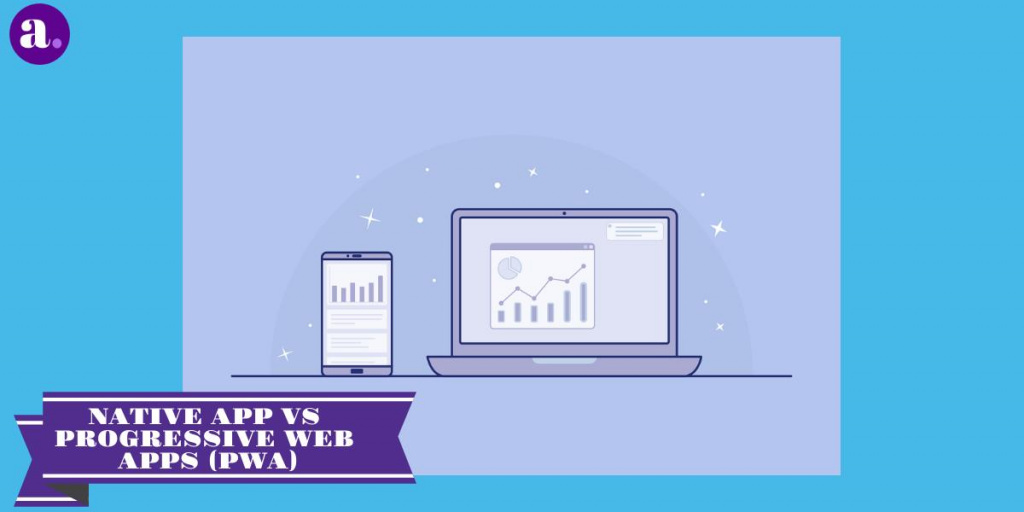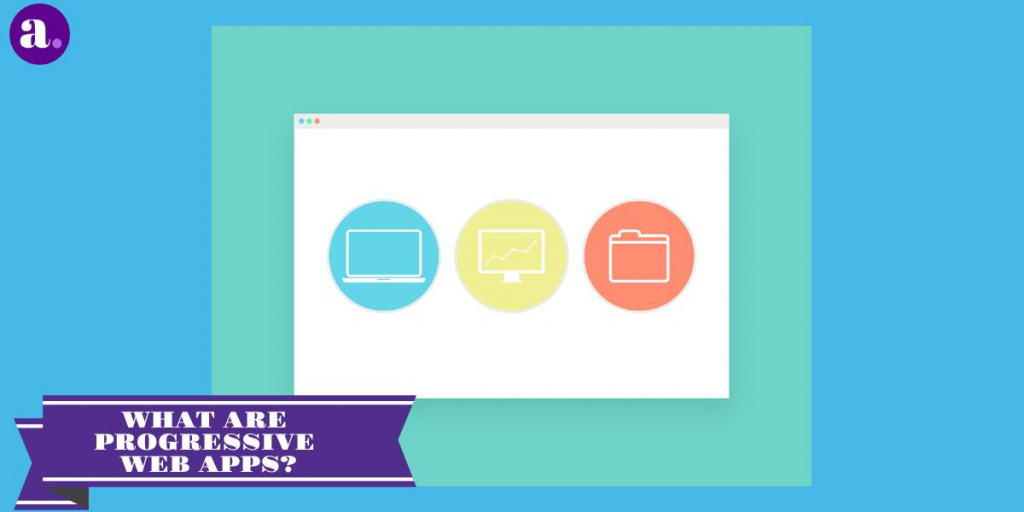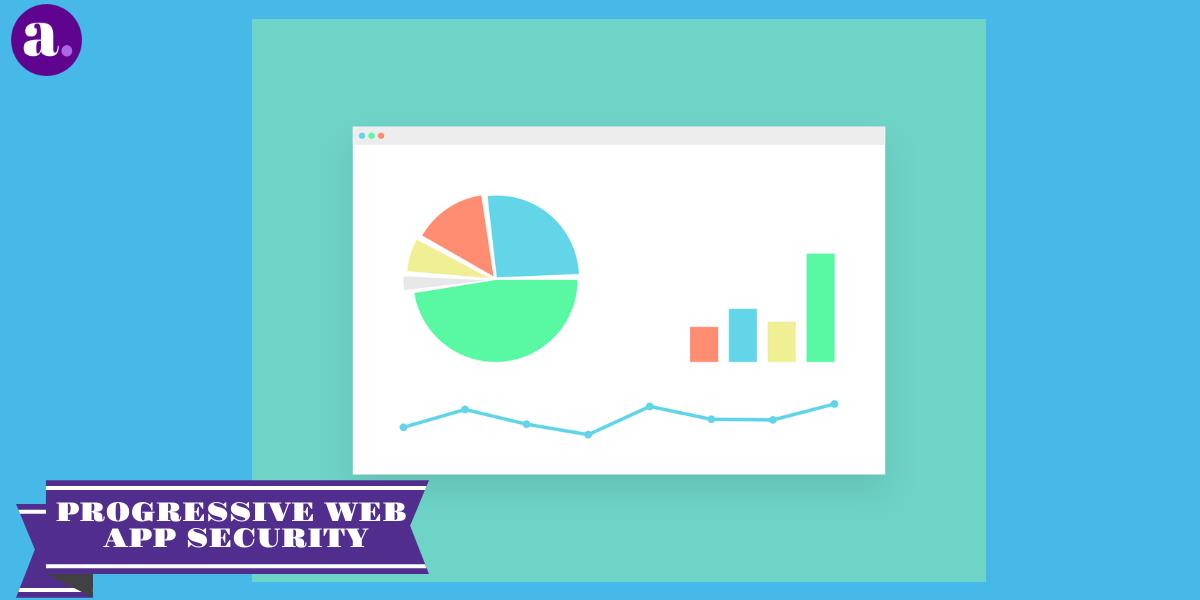Whether you are thinking of hiring the services of a software company or doing it yourself it is important to choose the type of application you are going to make. Today we will explain the difference between Native App Vs Progressive Web App (PWA), but also in which situation you should choose each option.

In order to decide this, we are going to analyze 3 things mainly to know which app suits you best according to your needs and these three questions include What are they? What I can / can’t do? And How to build an app?
Table of Contents
What Are Progressive Web Apps?
Progressive web apps (PWA) are web apps that reside in your browser and are made up of CSS, HTML, and JavaScript. You can also view a PWA as a cross between a mobile website and an app. In other words, it is a hybrid.
In Native App Vs Progressive Web App PWA use modern web technologies, and developers can create sites that provide a mobile-app-like experience to the user, as well as perform better and more securely and load faster. They are a normal website but look like an application to users.

They will also use the most current web standards and are built to work correctly and quickly on any browser.
Progressive web apps will load instantly no matter how slow your internet connection. Without dynamic content, you can also use apps if there is no internet connection.
What Is A Native Application?
Native applications are those that are developed using the tools provided by the owner of the operating system. In iOS, XCode and Swift / Objective-C are used and Android uses Android Studio and Java/ Kotlin.

Obviously, unlike the mobile app development in other programming languages outside the native of each platform, here we will have certain advantages depending on the platform chosen.
How To Use A Progressive Web App Offline?
To use a progressive app offline, you will need to turn on some experimental Chrome features. Type the following commands in the Chrome address bar: chrome:// flag / # bypass-app-banner-engagement-check
Below you should see the “Launch Now” button. Click on it and the next time you visit a site that uses progressive apps, you will be asked to install it.
For now, progressive web apps will not work on Safari / iOS. This means that you cannot enjoy offline mode, push notifications, nor home screen installations. Hopefully, Apple will switch to progressive apps soon.
An example of a progressive web app is Twitter’s site. This is what a progressive web app should do: It has an “add to home screen” prompt, reduces data consumption, and is loading almost immediately with service worker scripts.
Progressive Web App Security
Since they reside in your browser, there is no need for the App Store, and they will always use HTTPS for security. If a site does not work with HTTPS, it may not qualify as a progressive app. An SSL or TLS certificate must be installed in the browser on the site.

A progressive app is ready for any device; It does not matter if it is a phone, tablet, computer, etc. Since progressive apps are built on a shell model, you’ll enjoy app-style navigation and interactions.
You will not have to worry about using an older app as the service worker update process will keep the content updated. Progressive apps can be easily shared via URLs, and you can easily place them on your home screen based on the App Store.
They can also be added to your mobile home screen and can also send push notifications. Progressive web apps are also an advantage for businesses that use them because they help reduce maintenance time and costs.
Firefox has followed the example of Chrome, and with Firefox 58, you’ll be able to enjoy progressive web apps. If you come across a site that has a valid manifest and is served over HTTPS, you should see the badge in the address bar.
When you select it, you will see a message that says, “Add to Home Screen”. If you tap on an external link when you launch the app from your home screen, you will not lose any progress made on the site.
Native App Vs Progressive Web App
Progressive web apps are better than native apps because developers will no longer need to build apps for multiple platforms. This is going to save developers an extensive amount of time and money, not to mention financial savings as well.

Developers only have to build an app that will work on all existing platforms and devices. With progressive web apps, unlike native apps, you don’t need to install anything before using them.
While PWAs are very good, they lack them because they are still relatively new. For example, they have limited capabilities when trying to integrate with the features of your tablet or smartphone.
They are still not able to integrate with features like Bluetooth. Fingerprint sensor, accelerometer, nor NFC. For now, native apps are more reliable than PWA, but time will tell how this story ends.
PWA and native apps are no different from each other. For example, both are launched on the home screen and provide a very similar web experience/user interface.
PWA Limitations
Progressive web apps are considered the next big thing, but they have their drawbacks. For example, they do not work on all browsers such as Edge, Safari, Internet Explorer and other custom browsers. PWAs work on newer versions of browsers such as Samsung’s Android browser, Opera and Chrome.

The range also affects the device because not all of them can support them. Android supports PWA but has some support issues as it is still relatively new.
IOS currently does not completely support PWA because it has problems informing notifications and shortcuts on the device’s home screen. So far Apple has not officially announced whether it is taking on PWA or not soon.
If cross-application logins are important to you, then you might want to clear the PWA. They do not support this because they cannot collect data independently.
Conclusion
There is no exact answer to this question of Native App Vs Progressive Web App, it depends a lot on the product, the content of the application, and the demands of the users. If you intend to develop a sophisticated application that requires the use of specific phone hardware (gyroscope, accelerometer, etc.) the best option is to opt for a native application.
If, on the contrary, it is not necessary to make use of these functions, a PWA can offer an experience as good or even better than a native one in terms of performance, saving a lot of time and development costs.
